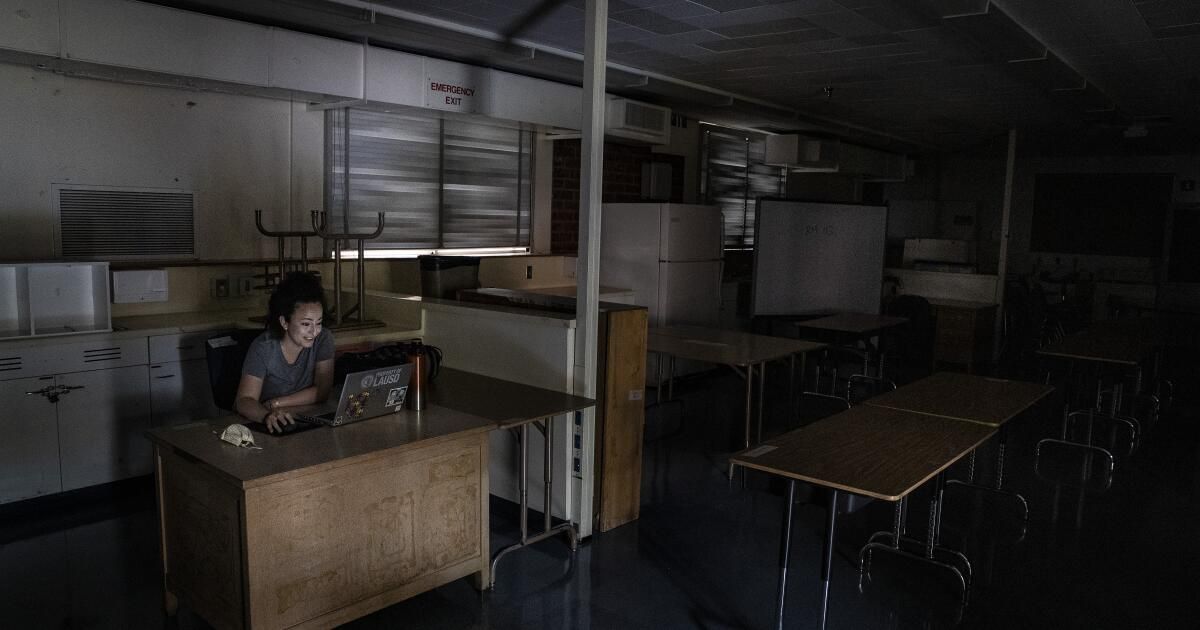Two weeks ago, I dropped my 3-year-old off at school for the first time. It was a happy day — until I learned that the California State Assembly was planning to dismantle a crucial program designed to keep kids like mine safe in the classroom.
Lime formor the California Healthy Air, Plumbing and Efficiency in Schools Program, helps schools improve air quality and cooling. Many of these systems are dangerously unsafe. dated or even completely missing in schools across the state. The improvements help protect our children from extreme heat, indoor air pollution, wildfire smoke and virus like COVID. But despite the increasingly serious effects of climate change, the Assembly has drawn up a plan This would eliminate the little funding we have to make schools safer, under the guise of reducing Californians' utility bills.
Opponents of Assembly Bill 3121, including the Natural Resources Defense Council, say it would, on average, give electric customers a one-time credit of just over $20 on a single billIt is not worth sacrificing the health of students.
So why is this plan on the table? Some lawmakers claim it addresses the problem of high electricity prices, but this is a cheap political trick, not a solution.
Assemblywoman Cottie Petrie-Norris (D-Irvine), who sponsored the bill, appears to have bought into utilities’ false claims that small programs like CalSHAPE are driving up electricity costs. This is a red herring designed to divert lawmakers’ attention from real problems, like excessive utility profits.
In 2023, PG&E raised 2.2 billion dollars in earnings, an increase of 25% over 2022. In the second quarter of 2024, earnings were 28% higher than a year earlier. The company has also announced plans to invest $900 million to buy the headquarters it moved to after completing its bankruptcy reorganization. Last year, San Diego Gas & Electric signed a contract Almost a billion dollars in earnings. And Edison International, the parent company of Southern California Edison, reported 1.2 billion dollars in net income in 2023, almost double last year. All while Californians struggle to pay their electric bills.
Utility profits last year were nearly 20 times greater than the funds left in CalSHAPE. Yet the Assembly wants to cut this healthy schools program to offer almost imperceptibly low single-bill credits instead of exploring other ideas, such as using lower-cost financing to cut utility profits on infrastructure investments, a proposal that was abandoned following opposition from the utility company.
CalSHAPE isn't costing anyone money now – its funding was obtained from previous utility bills. California schools have already submitted applications for most of 250 million dollars Lawmakers should let schools keep the money they are entitled to, rather than clawing it back at the last minute.
The Santa Barbara Unified School District, where my children will start kindergarten in a few years, was hoping for $6 million in crucial improvements through CalSHAPE. And the Tustin Unified School District, which Petrie-Norris represents, would lose more than $4 million in potential school funding if this plan is approved.
Some think that schools that have already applied will still receive funding if this bill becomes law, but the language is unclear. And if applicants do get the money they deserve, eliminating the program becomes an even more deceptive trick, which will translate into, by my best estimate, about $3 refund per taxpayer.
This version of the bill, introduced after 10 p.m. Wednesday night when many Californians were asleep, also cuts funding for Solar energy in affordable housing and Generation and storage of clean energyLawmakers may have put forward their plan at the last minute because they know it is wildly unpopular. A broad coalition with several unions, including United Steelworkers District 12 and the California Federation of Trade Unions, AFL-CIO, put forward a proposal. letter Earlier this month, he opposed the idea. Improving our school buildings not only benefits the health of students, but also creates good-paying jobs for Californians.
CalSHAPE also protects our teachers from pollution, which is why the California Federation of Teachers, the California Teachers Association, the California School Employees Association, and the Service Employees International Union have opposed this proposal. School employees should not have to breathe unhealthy air in the workplace.
Make no mistake, California is The country faces a utility affordability crisis. Rates have risen too quickly in recent years. But to bring down bills, policymakers must address the real causes of rising costs, rather than launching a raid on school funding or slashing programs that bring solar power to the rooftops of communities that have been left behind.
California's rate crisis cannot be solved with political maneuvering. Innovative solutions and better regulation of monopolistic utilities will be needed. What the legislature is proposing is like putting a band-aid on a wound that needs stitches. And our students and teachers will be the ones to suffer. When the Assembly and Senate meet on Saturday, lawmakers should stand with California's children and reject AB 3121.
Leah C. Stokes is an associate professor at the University of California, Santa Barbara, a senior policy advisor at Rewiring America, and host of the podcast “A question of degrees.” @leahstokes












